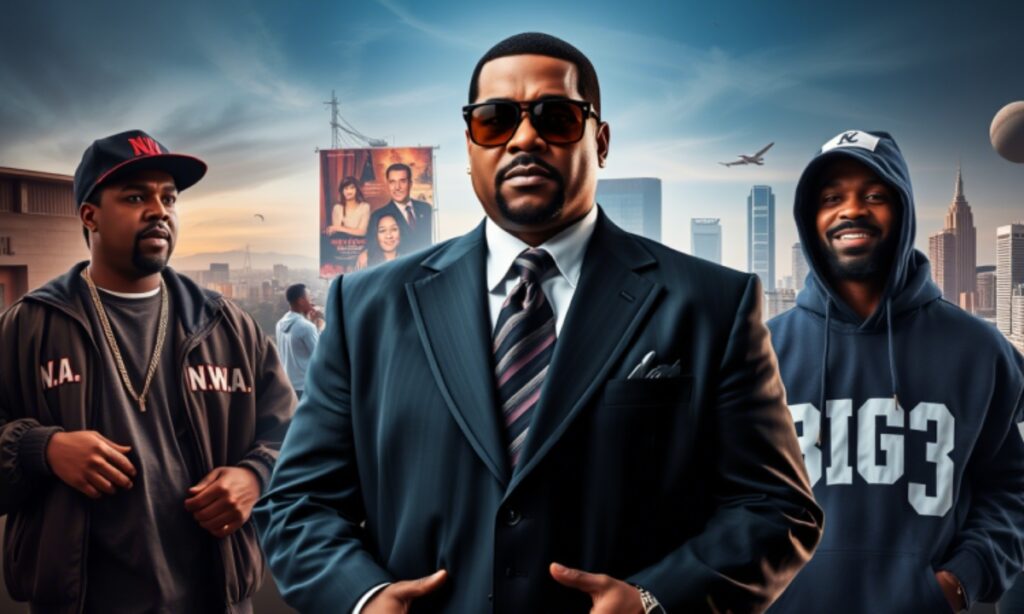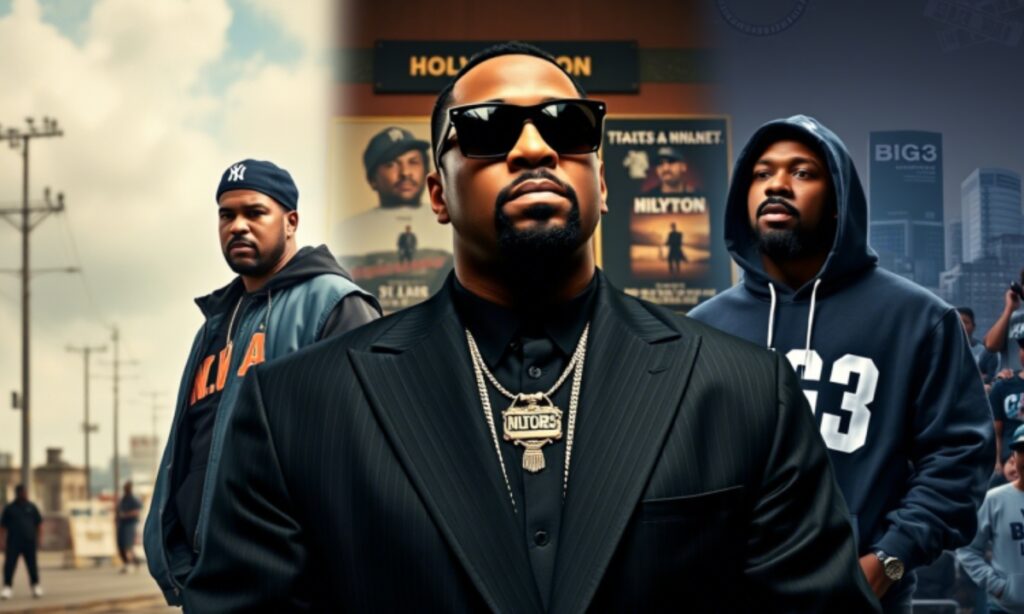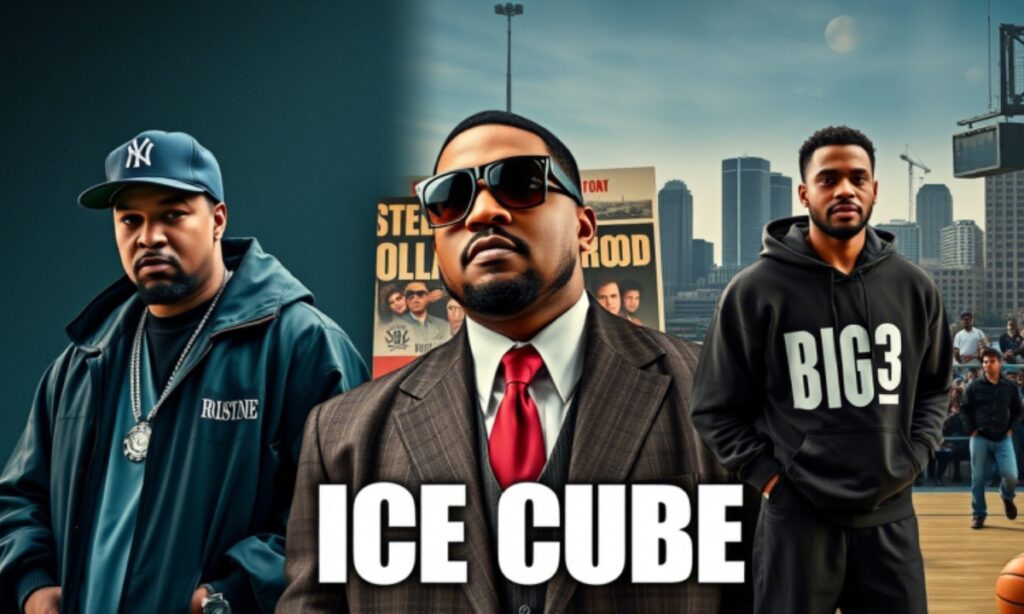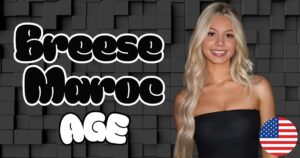From scribbling rhymes in his bedroom to commanding boardrooms across Hollywood, Ice Cube’s financial journey reads like the ultimate American success story. The legendary rapper turned Hollywood mogul didn’t just escape the streets—he built an entertainment empire worth $160 million that spans music, movies, and innovative business ventures.
Most fans recognize Ice Cube as the fierce N.W.A rapper who penned “Straight Outta Compton’s” most controversial verses. Fewer understand how O’Shea Jackson Sr. systematically transformed that raw talent into lasting wealth through strategic career moves, calculated risks, and an unwavering commitment to authenticity.
This comprehensive breakdown reveals exactly how Ice Cube accumulated his massive fortune, from his early days battling for respect in Compton to becoming one of entertainment’s most successful entrepreneur moguls.
Ice Cube Bio And Wiki
| Personal Details | Information |
| Full Name | O’Shea Jackson Sr. |
| Born | June 15, 1969, Los Angeles, California |
| Height | 5’8″ (1.73m) |
| Family | Wife: Kimberly Woodruff (married 1992), 5 children |
| Education | Phoenix Institute of Technology (Architectural Drafting) |
| Net Worth | $160 million (2024) |
Ice Cube’s rise from South Central LA represents more than typical celebrity financial success. Born into a working-class family, Jackson showed entrepreneurial instincts early. His father worked as a UCLA groundskeeper while his mother served as a hospital custodian.
The future entertainment mogul earned his nickname from his older brother, who threatened to slam him into a freezer until he became an ice cube. That tough exterior would later become his trademark persona, helping build one of hip hop’s most recognizable brands.
Key Career Statistics:
- Years Active: 1986-present (38+ years)
- Solo Albums Sold: 10+ million worldwide
- Movies Appeared In: 40+ films and TV shows
- Companies Founded: 5+ major enterprises
- Grammy Nominations: 1 (with N.W.A)
Jackson’s educational background in architectural drafting proved surprisingly valuable. Those technical skills taught him precision and planning—qualities that would later serve him well in business portfolio management and entertainment production.
From South Central To N.W.A: The Early Hustle

How Ice Cube Got His Start In Music
Ice Cube’s musical journey began at George Washington Preparatory High School, where he started writing lyrics during typing class. Unlike many aspiring rappers, he approached music with calculated precision rather than blind ambition.
His breakthrough came through a mutual friend who introduced him to Andre “Dr. Dre” Young. The connection wasn’t immediate—Dre initially dismissed the teenager as “too young and inexperienced.” However, Cube’s persistence and raw lyrical talent eventually won him over.
Early Financial Milestones:
- First Recording Payment: $50 for writing “Boyz-n-the-Hood”
- Weekly Earnings (1986): $50-$200 per song
- Living Situation: Stayed at home while building reputation
- Equipment Investment: Purchased basic recording gear with early earnings
The young rapper’s wealth building started modestly, but his strategic approach set him apart. While peers spent earnings on flashy items, Cube reinvested in equipment and studio time.
The Rise And Fallout With N.W.A
N.W.A’s formation in 1987 marked a pivotal moment in both hip hop history and Ice Cube’s financial trajectory. The group’s authentic street narratives resonated with audiences hungry for unfiltered social commentary.
“Straight Outta Compton” (1988) Financial Breakdown:
- Total Album Sales: 3+ million copies
- Tour Revenues: $500,000+
- Group’s Total Earnings: ~$1.2 million
- Ice Cube’s Share: Approximately $32,000
The shocking disparity between the album’s success and Cube’s compensation revealed harsh entertainment industry realities. Manager Jerry Heller’s contract heavily favored Eazy-E, leaving other members with minimal earnings despite their creative contributions.
“I was getting about $32,000 for the whole thing. That’s when I knew I had to do something different. I wasn’t going to let anyone else control my destiny.” – Ice Cube
This financial betrayal became the catalyst for Cube’s eventual departure and his legendary diss track “No Vaseline”—widely considered one of hip hop’s most devastating responses.
First Signs Of Financial Success
Ice Cube’s 1989 exit from N.W.A, while personally painful, proved financially brilliant. His solo contract with Priority Records included several innovative clauses that would define his approach to business ventures:
Solo Deal Highlights:
- Advance Payment: $120,000 (4x his N.W.A earnings)
- Publishing Rights: Retained 50% ownership
- Creative Control: Complete artistic freedom
- Backend Participation: Percentage of profits above certain thresholds
This contract structure became Cube’s template for future deals. By prioritizing long-term ownership over immediate payouts, he set the foundation for lasting musician fortune.
Ice Cube Net Worth 2025

Ice Cube Net Worth stands as a testament to strategic career evolution and diversified wealth building. The legendary rapper’s current fortune of $160 million didn’t happen overnight—it’s the result of nearly four decades of calculated moves across multiple industries.
From his early struggles earning just $32,000 during N.W.A’s breakthrough success to commanding millions per film project, Cube’s financial journey represents one of hip hop’s greatest transformation stories.
His rapper wealth stems not just from music hits and album sales, but from smart business ventures including the BIG3 basketball league, Cube Vision production company, and strategic real estate investments.
Unlike many celebrities who rely on single income streams, this entertainment mogul built lasting financial assets that continue generating revenue long after initial projects wrap. The musician fortune reflects his core philosophy: ownership trumps income, authenticity beats trends, and long-term thinking creates generational wealth.
Solo Stardom And Social Commentary
Breakout Albums And Their Effect
Ice Cube’s solo career launched with explosive financial and artistic success. His debut records didn’t just establish him as a formidable rapper—they proved controversial content could drive massive commercial enterprises.
Album-by-Album Financial Impact:
| Album | Year | Sales | Estimated Earnings | Key Tracks |
| AmeriKKKa’s Most Wanted | 1990 | 1M+ copies | $2 million | “The Nigga Ya Love to Hate” |
| Death Certificate | 1991 | 2M+ copies | $3.5 million | “No Vaseline” |
| The Predator | 1992 | 3M+ copies | $5+ million | “It Was a Good Day” |
Revenue Stream Breakdown:
- Album Sales: 60% of total income
- Publishing Rights: 25% of total income
- Touring and Performances: 15% of total income
“Death Certificate” marked a turning point in rapper wealth accumulation. The album’s controversial social commentary generated massive media attention, translating directly into sales. Cube learned that authenticity—even when controversial—could be incredibly profitable.
His successful albums established several business principles he’d later apply to other ventures:
- Authenticity sells better than manufactured personas
- Controversy generates free publicity when handled strategically
- Ownership matters more than immediate cash
How Controversy Strengthened His Brand
While many artists avoid controversy, Ice Cube weaponized it. His willingness to address uncomfortable truths about race, politics, and social injustice created an unshakeable fan base willing to support his entrepreneurial pursuits.
Case Study: “No Vaseline” Impact
- Release Date: December 1991
- Target: Former N.W.A members and management
- Immediate Effect: Massive radio play and street credibility
- Long-term Value: Established Cube as hip hop’s premier lyricist
- Financial Benefit: Drove “Death Certificate” to multi-platinum status
The track’s success taught Cube that meaningful lyrics and impactful commentary could be more valuable than radio-friendly content. This lesson would later influence his approach to film roles and business initiatives.
Strategic Benefits of Controversy:
- Free Media Coverage: Saved hundreds of thousands in marketing costs
- Authentic Voice: Built trust with target demographics
- Differentiation: Set him apart from mainstream rappers
- Long-term Credibility: Created foundation for Hollywood mogul transition
Touring And Early Endorsements
Live performances became crucial to Ice Cube’s wealth building strategy. His intense stage presence and loyal fanbase commanded increasingly higher fees throughout the early 1990s.
Concert Economics Evolution:
- 1990-1991: $10,000-$25,000 per show
- 1992-1993: $25,000-$50,000 per show
- 1994-1995: $50,000-$100,000 per show
Merchandise Revenue:
- T-shirts and hoodies: $15-25 each (40% profit margin)
- CDs and cassettes: $10-15 each (30% profit margin)
- Posters and accessories: $5-15 each (60% profit margin)
His first major endorsement deals included partnerships with sports apparel companies and local businesses. These early commercial enterprises taught him valuable lessons about brand alignment and target market understanding.
Hollywood Moves: Ice Cube As Actor And Producer
Breakthrough With ‘Boyz N The Hood’
John Singleton’s 1991 urban film “Boyz n the Hood” represented Ice Cube’s Hollywood debut and a masterclass in strategic career pivoting. The street drama showcased his natural acting ability while maintaining his authentic persona.
Financial Breakdown:
- Acting Fee: $300,000
- Box Office Total: $57.5 million
- Budget: $6.5 million
- Profit Multiple: Nearly 9x return
- Cube’s Additional Benefits: Industry relationships and credibility
The coming-of-age movie success opened doors throughout Hollywood. Suddenly, the rapper known for aggressive lyrics was being courted by major studios and A-list producers.
“‘Boyz n the Hood’ showed me that Hollywood was just another business. You had to understand the game to win.” – Ice Cube
Strategic Importance:
- Proved Versatility: Demonstrated range beyond music
- Built Relationships: Connected with powerful industry figures
- Learned Business: Understood film financing and production
- Established Value: Created demand for his future projects
The 90s film classic became more than just an acting credit—it was Cube’s MBA in entertainment business.
The ‘Friday’ Franchise And Beyond
Ice Cube’s decision to write and star in “Friday” (1995) marked his evolution from performer to film producer. The low-budget comedy series became a cult classic and demonstrated his understanding of audience desires.
Friday Franchise Financial Success:
| Film | Year | Budget | Box Office | Cube’s Role | Estimated Earnings |
| Friday | 1995 | $3.5M | $27.5M | Writer/Star | $1.5M+ |
| Next Friday | 2000 | $11M | $57.3M | Producer/Star | $3M+ |
| Friday After Next | 2002 | $20M | $33.5M | Producer/Star | $4M+ |
The popular movies proved Cube understood his audience better than studio executives. While critics initially dismissed “Friday” as lowbrow comedy, audiences embraced its authentic humor and quotable dialogue.
Key Business Lessons:
- Know Your Audience: Cube understood what fans wanted
- Control Content: Writing and producing provided multiple revenue streams
- Build Franchises: Sequels multiplied initial investments
- Cultural Impact: Created lasting value beyond box office numbers
Additional successful projects included:
- “Barbershop” Series: $75+ million total box office
- “Are We There Yet?” Family Films: $140+ million combined
- “Ride Along” Franchise: $200+ million worldwide
Founding Cube Vision And Producing Hits
Cube Vision Entertainment’s 1998 launch represented Ice Cube’s boldest business venture. The production company allowed him to control content creation while building lasting entertainment assets.
Company Structure:
- Founded: 1998
- Initial Investment: $2 million
- First-Look Deals: Sony Pictures, Warner Bros
- Annual Revenue: $15-20 million (peak years)
- Employee Count: 25-40 staff members
Cube Vision’s success came from understanding underserved markets. While major studios chased blockbuster tentpoles, Cube focused on authentic stories that resonated with specific communities.
Major Productions and Earnings:
- “Barbershop” (2002): $10M+ producer fees
- “Ride Along” (2014): $15M+ total earnings
- Television Projects: $5M+ annual income
- Development Deals: $2-3M per project
The media company philosophy centered on ownership rather than work-for-hire arrangements. By retaining rights to characters, stories, and formats, Cube built long-term entertainment assets.
Strategic Advantages:
- Creative Control: Final say on all content decisions
- Multiple Revenue Streams: Theatrical, streaming, international, merchandise
- Talent Development: Platform for discovering new creators
- Industry Relationships: Strong partnerships with major distributors
Business Ventures And The $160M Net Worth

Solo By Cube Clothing Line
Solo by Cube launched in 1993 as Ice Cube recognized fashion’s potential within hip hop culture. The apparel brand capitalized on streetwear’s growing mainstream acceptance while maintaining authentic urban credibility.
Business Model Breakdown:
- Launch Year: 1993
- Initial Investment: $500,000
- Target Market: Urban men aged 16-35
- Peak Annual Revenue: $5-8 million
- Profit Margins: 40-60% on most items
The clothing line succeeded by avoiding common celebrity fashion mistakes. Instead of high-end luxury items, Cube focused on affordable streetwear that his core audience could actually purchase.
Product Categories:
- T-shirts and Hoodies: $25-45 (bestsellers)
- Jeans and Pants: $60-120
- Accessories: $15-35
- Limited Editions: $75-150
Marketing Strategy:
- Music Video Integration: Cube wore Solo by Cube in all videos
- Concert Merchandise: Exclusive designs at live shows
- Retail Partnerships: Distributed through urban fashion stores
- Authentic Messaging: Reflected Cube’s personal style
The fashion venture taught valuable lessons about brand extension and licensing that would inform future business initiatives.
Big3 Basketball League And Media Deals
The BIG3 basketball league represents Ice Cube’s most ambitious sports enterprise. Co-founded with entertainment executive Jeff Kwatinetz in 2017, the 3-on-3 league reimagined professional basketball for modern audiences.
Investment Breakdown:
- Initial Investment: $10 million (Cube’s portion)
- Co-founder: Jeff Kwatinetz
- Cube’s Ownership: 25-30%
- Current Valuation: $50+ million
- Annual Revenue: $8-12 million
BIG3’s innovation came from combining retired NBA stars with entertainment-focused presentation. The basketball franchise attracted viewers who might not watch traditional games while providing former players with lucrative second careers.
Key Financial Elements:
- Player Salaries: $10,000-$100,000 per season
- Broadcast Rights: CBS Sports partnership worth $7M+ annually
- Sponsorship Deals: Ice Cube clothing, other major brands
- International Expansion: Plans for global leagues
Media Partnership Success:
- CBS Sports: Primary broadcast partner
- Facebook Live: Streaming partnership
- International TV: 40+ countries broadcasting
- Digital Content: Millions of social media views
The athletic venture demonstrated Cube’s ability to identify market gaps and create solutions. Traditional basketball leagues focused on young athletes, leaving retired stars underutilized despite their continued popularity.
Strategic Benefits:
- Multiple Revenue Streams: TV rights, sponsorships, merchandise, ticket sales
- Celebrity Participation: Drew media attention and credibility
- Scalable Model: Expandable to international markets
- Long-term Value: Building sports entertainment brand
Real Estate And Long-Term Investments
Ice Cube’s property ownership strategy reflects the same calculated approach he’s applied throughout his career. Rather than flashy purchases, he’s focused on building lasting realty assets through strategic land investments.
Primary Real Estate Holdings:
| Property | Location | Purchase Year | Estimated Value | Type |
| Main Residence | Encino, CA | 1996 | $7.25 million | Personal |
| Investment Property | Beverly Hills | 2003 | $4.5 million | Rental |
| Commercial Building | Los Angeles | 2008 | $6 million | Business |
| Vacation Home | Marina del Rey | 2012 | $3.2 million | Personal |
Investment Strategy Principles:
- Location Focus: Premium California markets
- Diversification: Mix of residential and commercial
- Long-term Holding: Minimal buying and selling
- Cash Flow: Rental income from investment properties
Total Real Estate Portfolio Value: $20-25 million
Beyond realty ventures, Cube has diversified into other investment opportunities:
Stock Portfolio:
- Entertainment Companies: Disney, Netflix, Warner Bros Discovery
- Technology Stocks: Apple, Microsoft, Google
- Index Funds: S&P 500 and other broad market exposure
- Estimated Value: $15-20 million
Private Investments:
- Startup Funding: Technology and entertainment companies
- Music Rights: Purchasing catalogs from other artists
- Cryptocurrency: Conservative exposure to digital assets
- Business Partnerships: Strategic investments in complementary businesses
His estate portfolio reflects a conservative wealth preservation strategy designed to protect and grow assets over decades rather than seeking quick returns.
Conclusion – Ice Cube Net Worth
Ice Cube’s $160 million net worth represents more than financial success—it’s a masterclass in strategic career evolution and authentic brand building. From his early days as an N.W.A rapper to his current status as a respected Hollywood mogul, O’Shea Jackson has consistently demonstrated the power of owning your narrative.
Wealth Distribution Breakdown:
- Entertainment Assets: $96 million (60%)
- Business Ventures: $48 million (30%)
- Real Estate and Investments: $16 million (10%)
Key Success Principles:
- Authenticity Over Trends: Cube never abandoned his core identity
- Ownership Over Income: Prioritized long-term assets over immediate payouts
- Diversification Strategy: Built multiple income streams across industries
- Strategic Risk-Taking: Calculated moves rather than reckless gambles
- Community Connection: Maintained relationships with core audience
The rapper wealth accumulation timeline spans nearly four decades, proving that sustainable success requires patience, planning, and adaptability. Cube’s journey from writing meaningful lyrics in South Central to producing blockbuster films in Hollywood demonstrates how authentic voices can transcend industries.
Future Outlook:
- BIG3 Expansion: International growth could double league value
- Streaming Content: Original programming for major platforms
- Legacy Projects: Documentaries and biographical content
- Next Generation: Mentoring his children’s entertainment careers
Ice Cube’s transformation from hip hop legend to entertainment mogul offers inspiration for any creative professional seeking to build lasting wealth. His success proves that controversial content, when authentic and strategic, can become the foundation for business empires.
The celebrity financials tell only part of the story. Cube’s true legacy lies in showing how artists can maintain creative integrity while building generational wealth through smart business portfolio management and strategic thinking.
For aspiring entrepreneurs in entertainment or any industry, Ice Cube’s journey provides a roadmap: stay true to your authentic voice, think long-term, diversify your income streams, and never let others control your destiny. In an industry known for flash-in-the-pan success stories, O’Shea Jackson built something permanent—and worth $160 million.
Ice Cube’s $160M net worth revealed: From N.W.A rapper to Hollywood mogul through music, movies, BIG3 league & smart business ventures.

Admin: Jiya Pari
Jiya Pari is the talented admin of Cutegirlphoto.info, bringing 5 years of experience in blogging and content creation. She manages the site with creativity and care, ensuring a fun and engaging experience for all visitors.





